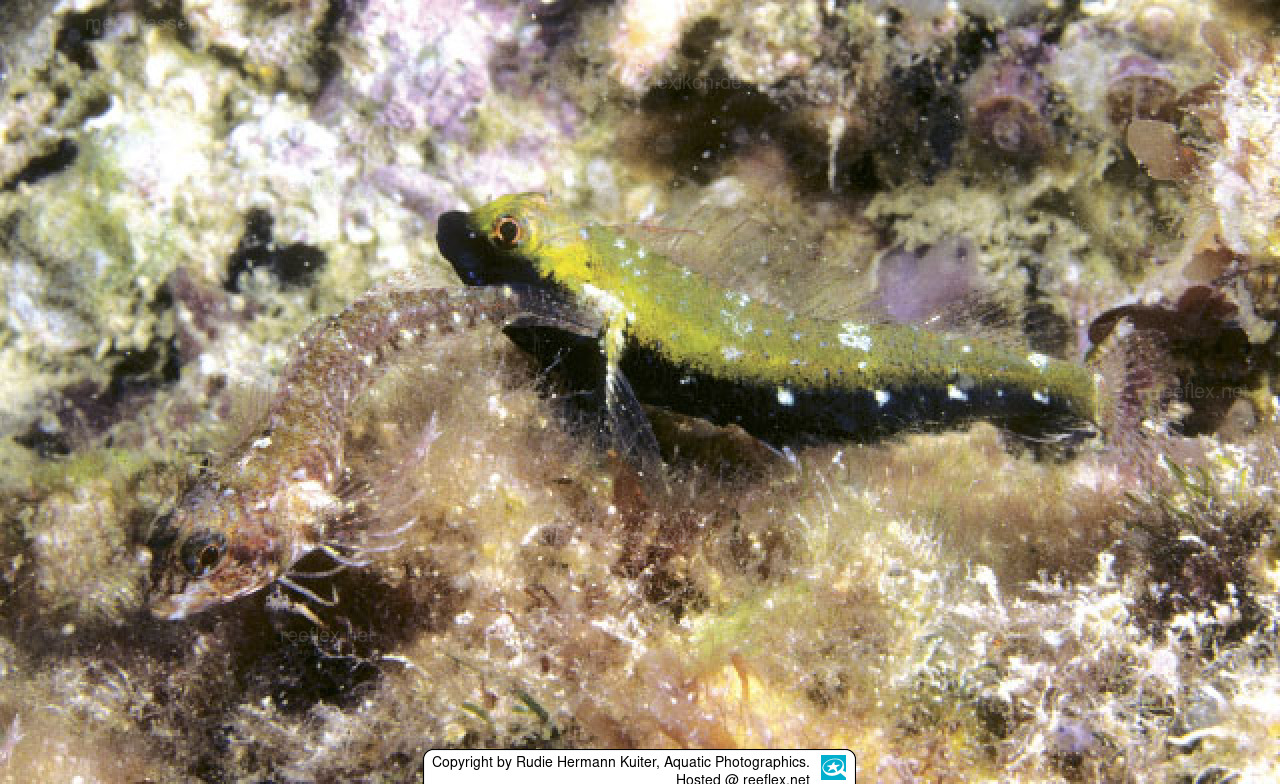Info
McCulloch & Waite, 1918
Distribution:
Eastern Indian Ocean: Found in Western and South Australia.
Biology:
Helcogramma decurrens is a bottom-living blennioid species, typically found on rocky substrates covered in algae.
It occurs in the subtidal to intertidal zone, and has been recorded at depths of up to 13 m.
Lives on rock surfaces and under ledges;
common at depths less than 10 m.
Synonymised taxa:
Vauclusella calva Whitley, 1944
Jumping guard
A jumping guard prevents (nocturnal) fish from jumping out.
Wrasses, blennies, hawkfishs and gobies jump out of an unprotected tank in fright if their night rest is disturbed, unfortunately these jumpers are found dried up in the morning on carpets, glass edges or later behind the tank.
https://www.korallenriff.de/en/article/1925_5_Jump_Protection_Solutions_for_Fish_in_the_Aquarium__5_Net_Covers.html
A small night light also helps, as it provides the fish with a means of orientation in the dark!
Distribution:
Eastern Indian Ocean: Found in Western and South Australia.
Biology:
Helcogramma decurrens is a bottom-living blennioid species, typically found on rocky substrates covered in algae.
It occurs in the subtidal to intertidal zone, and has been recorded at depths of up to 13 m.
Lives on rock surfaces and under ledges;
common at depths less than 10 m.
Synonymised taxa:
Vauclusella calva Whitley, 1944
Jumping guard
A jumping guard prevents (nocturnal) fish from jumping out.
Wrasses, blennies, hawkfishs and gobies jump out of an unprotected tank in fright if their night rest is disturbed, unfortunately these jumpers are found dried up in the morning on carpets, glass edges or later behind the tank.
https://www.korallenriff.de/en/article/1925_5_Jump_Protection_Solutions_for_Fish_in_the_Aquarium__5_Net_Covers.html
A small night light also helps, as it provides the fish with a means of orientation in the dark!







 Rudie Hermann Kuiter, Aquatic Photographics, Australien
Rudie Hermann Kuiter, Aquatic Photographics, Australien














